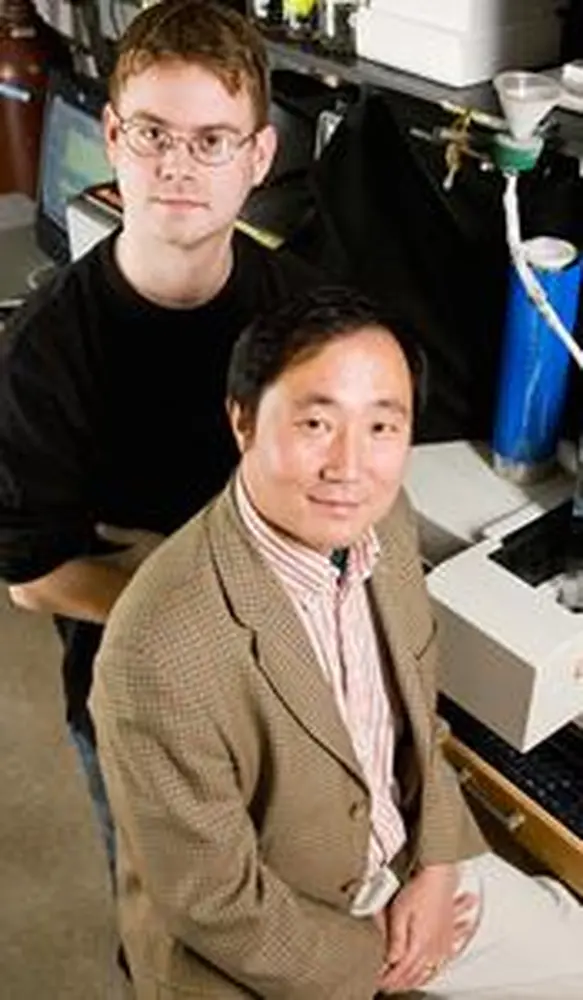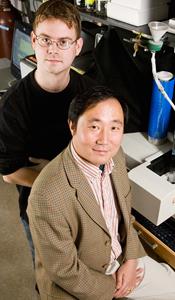

The road to discovering new pharmaceuticals and other vital biotechnological products just got a little smoother. LAS scientists have found a way to prevent the pH of laboratory samples from changing as the samples are cooled—a long-standing problem that has been known to throw off test results.
Even tiny changes in the pH—the acidity or alkalinity—of a lab sample can influence its properties, says Yi Lu, the University of Illinois chemistry professor heading the research team. That's why pH buffers are used to maintain the acidity or alkalinity of lab samples.
However, scientists have known since the 1930s that the pH of chemical buffers can change as the samples are cooled, which is commonly done to extend the shelf life of biological specimens and pharmaceuticals.
"We like to freeze proteins, nucleic acids, pharmaceutical drugs, and other biomolecules to keep them a long time and to study them more readily under very low temperatures," Lu says. "But when the pH changes at low temperature, the sample integrity can change."
To demonstrate this effect, graduate student Nathan Sieracki repeatedly froze and thawed oxacillin, a penicillin analog used to treat infections.
"After one freeze-thaw, 50 percent of the drug was dead in several of the buffers investigated," Sieracki says. In addition, he was able to demonstrate that the loss of integrity was due to changes in pH.
Sieracki then began evaluating different combinations of buffer components. The new "temperature-independent" buffer that resulted is immediately useful for biological research, he says. What's more, he is confident that a similar buffer could be made for use in many fields, such as biochemistry, biophysics, chemical biology, and biomedical research.


